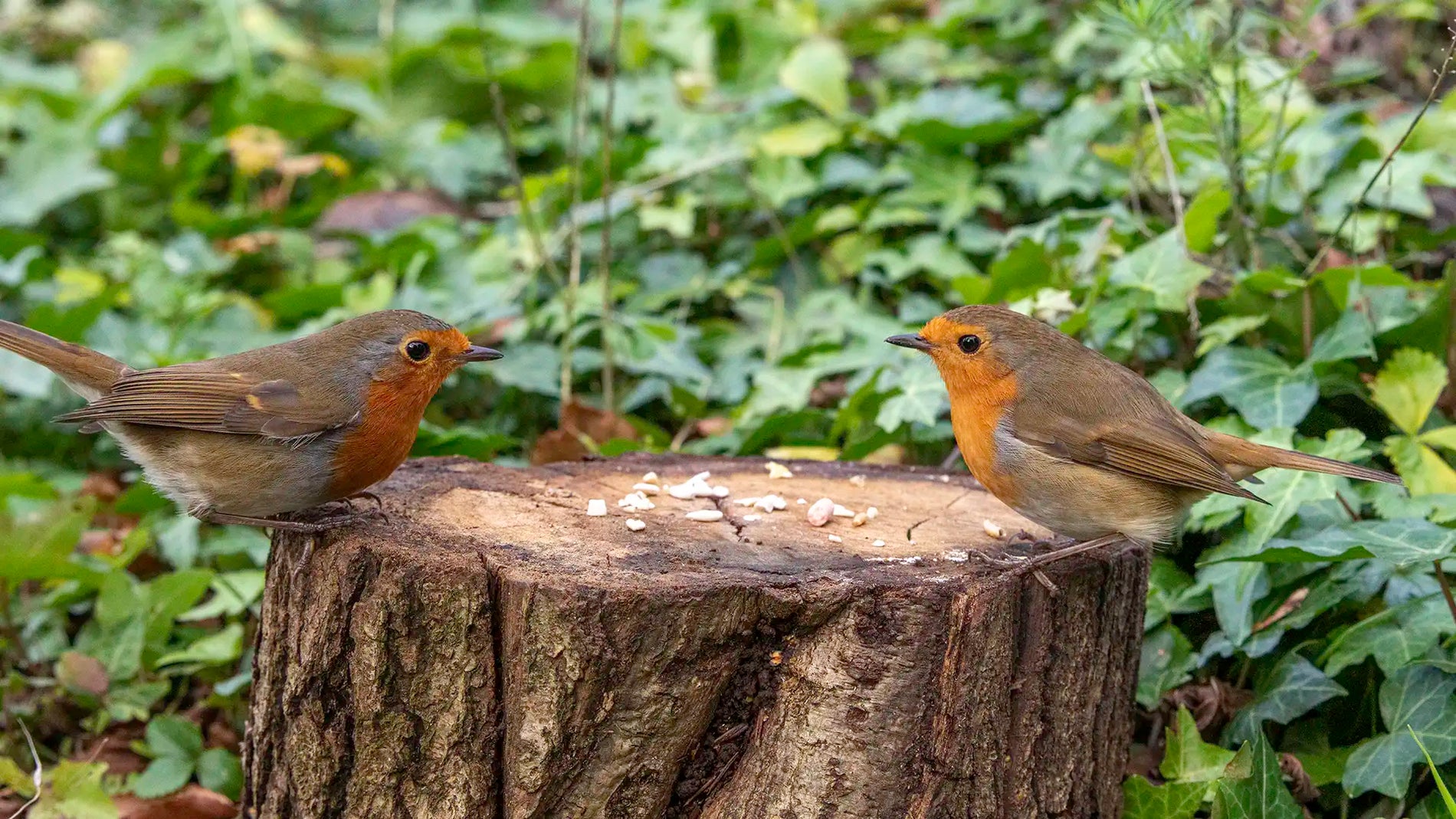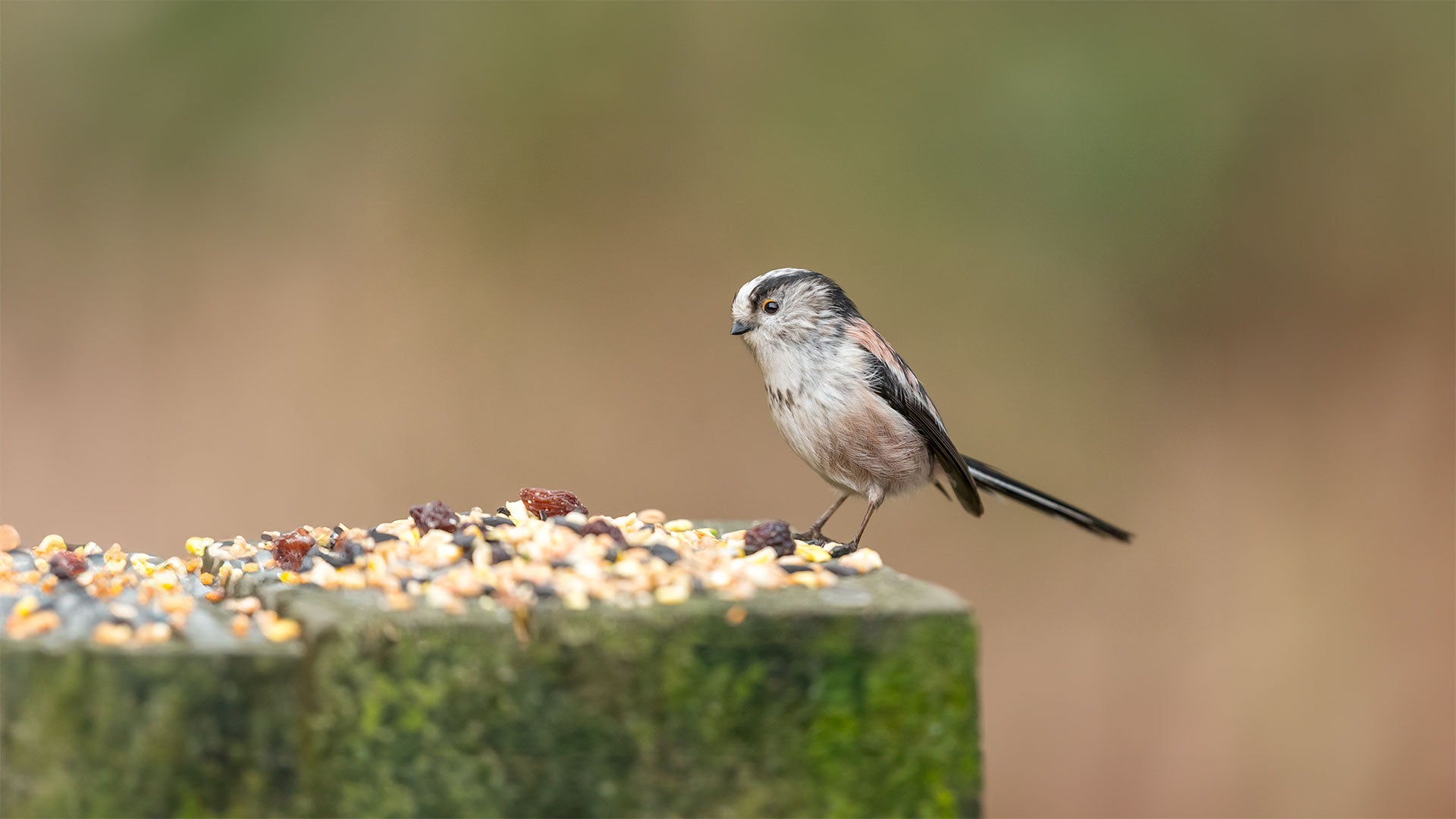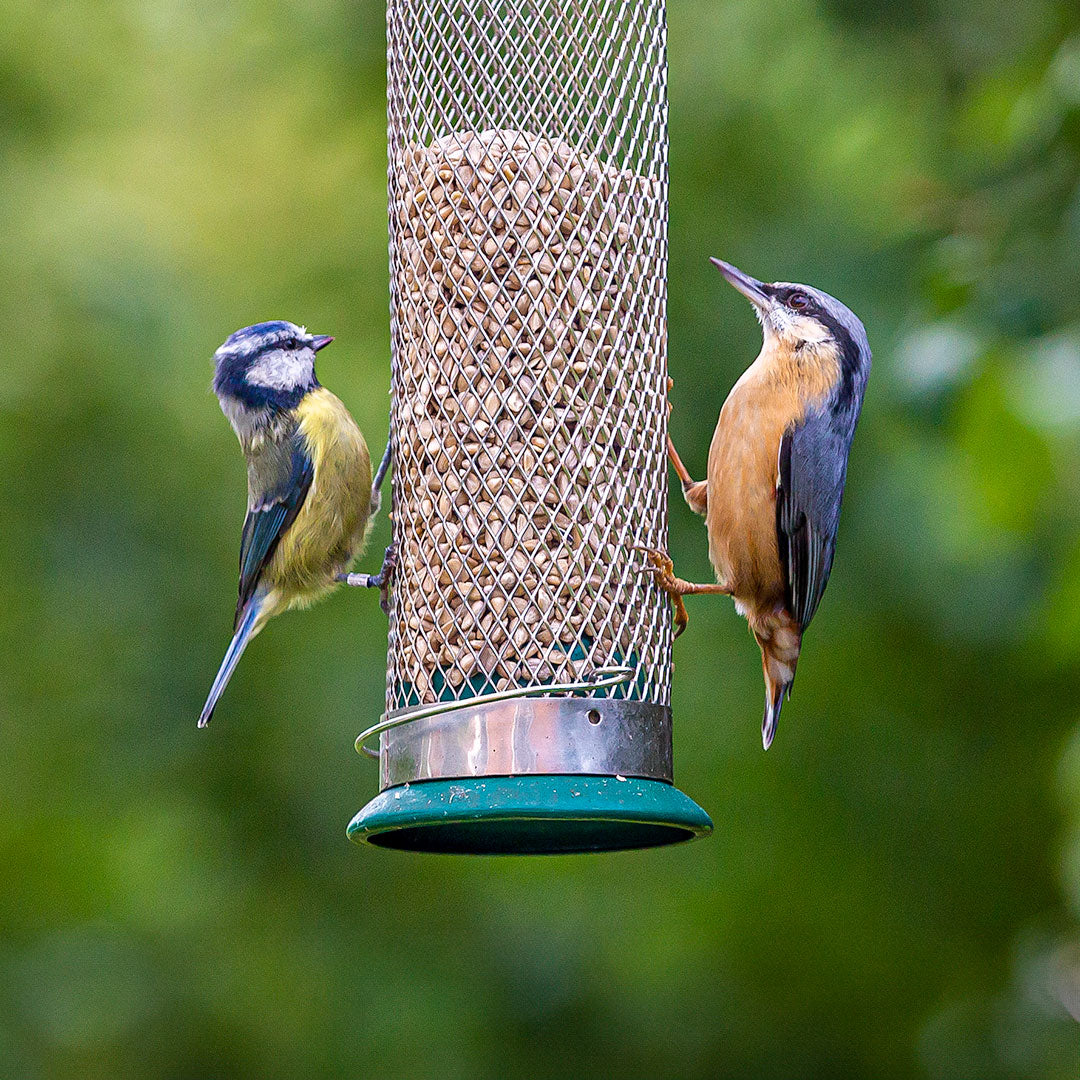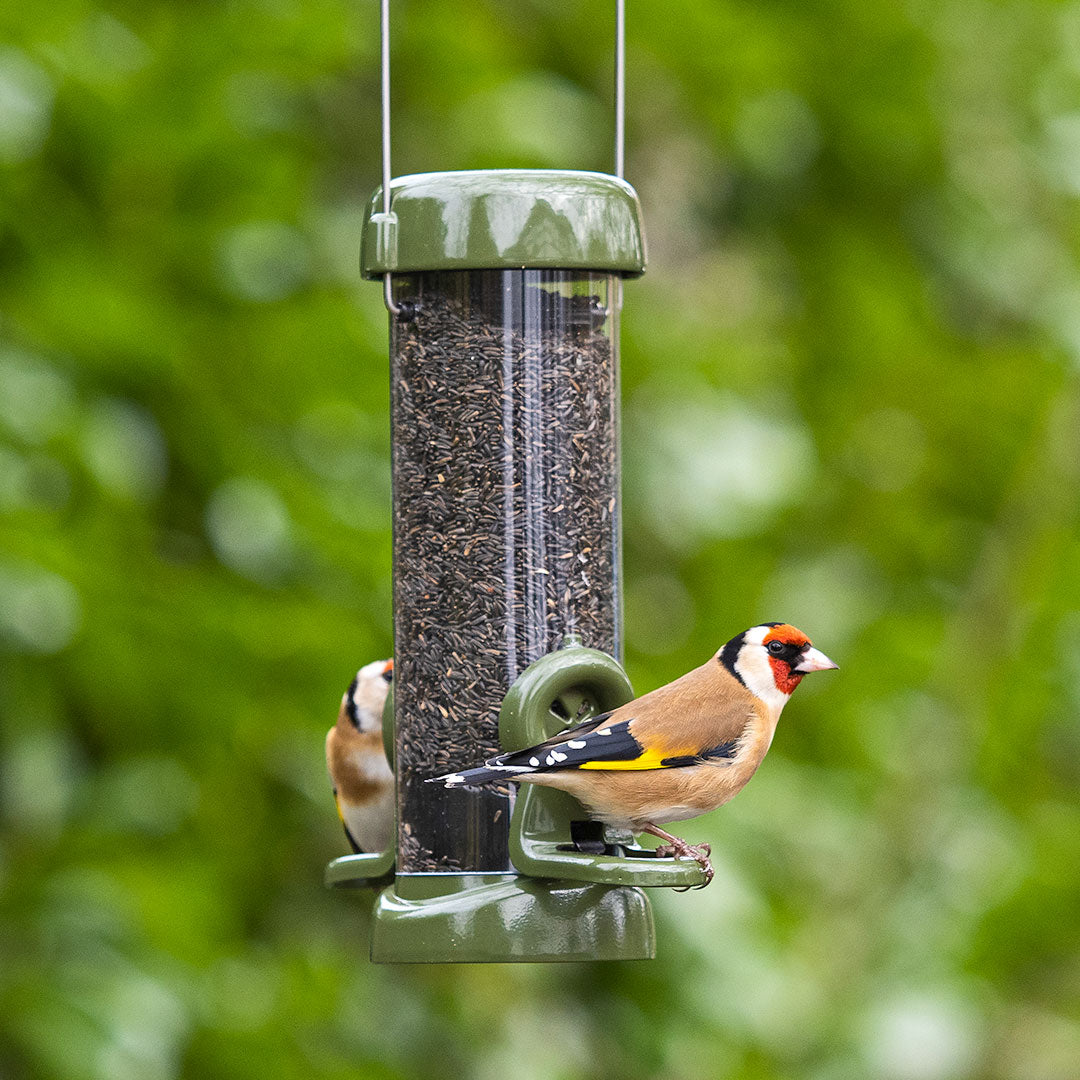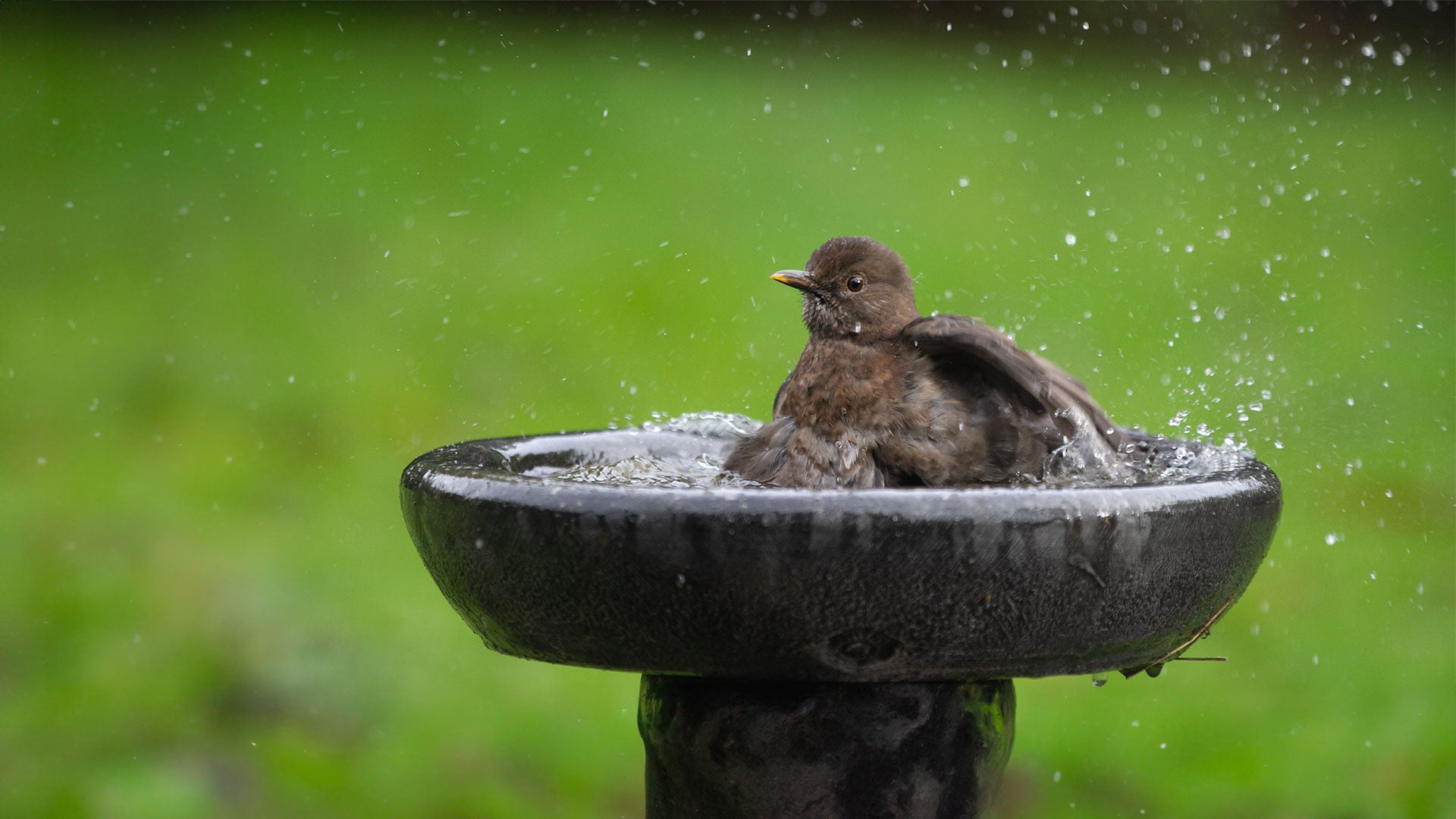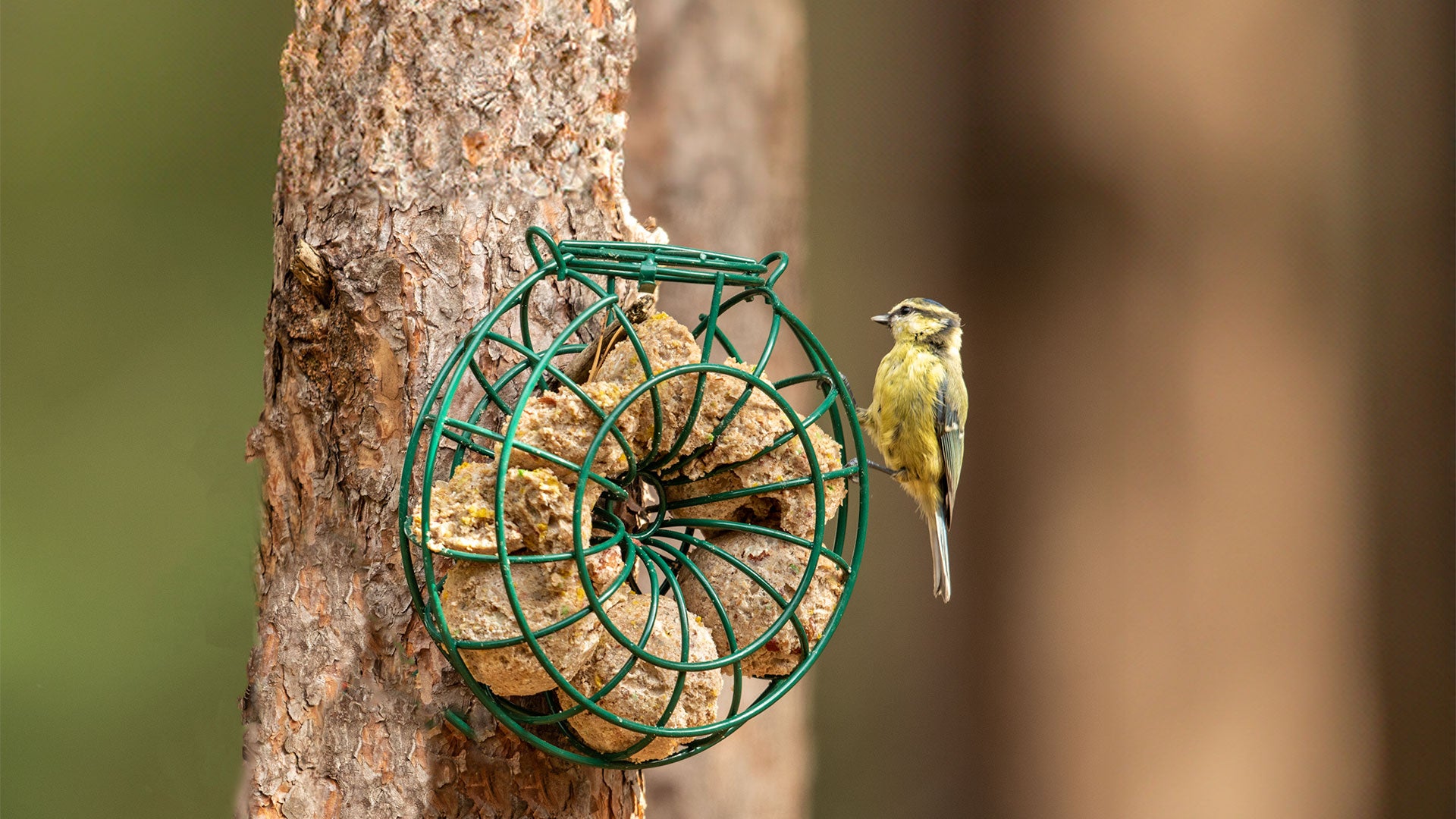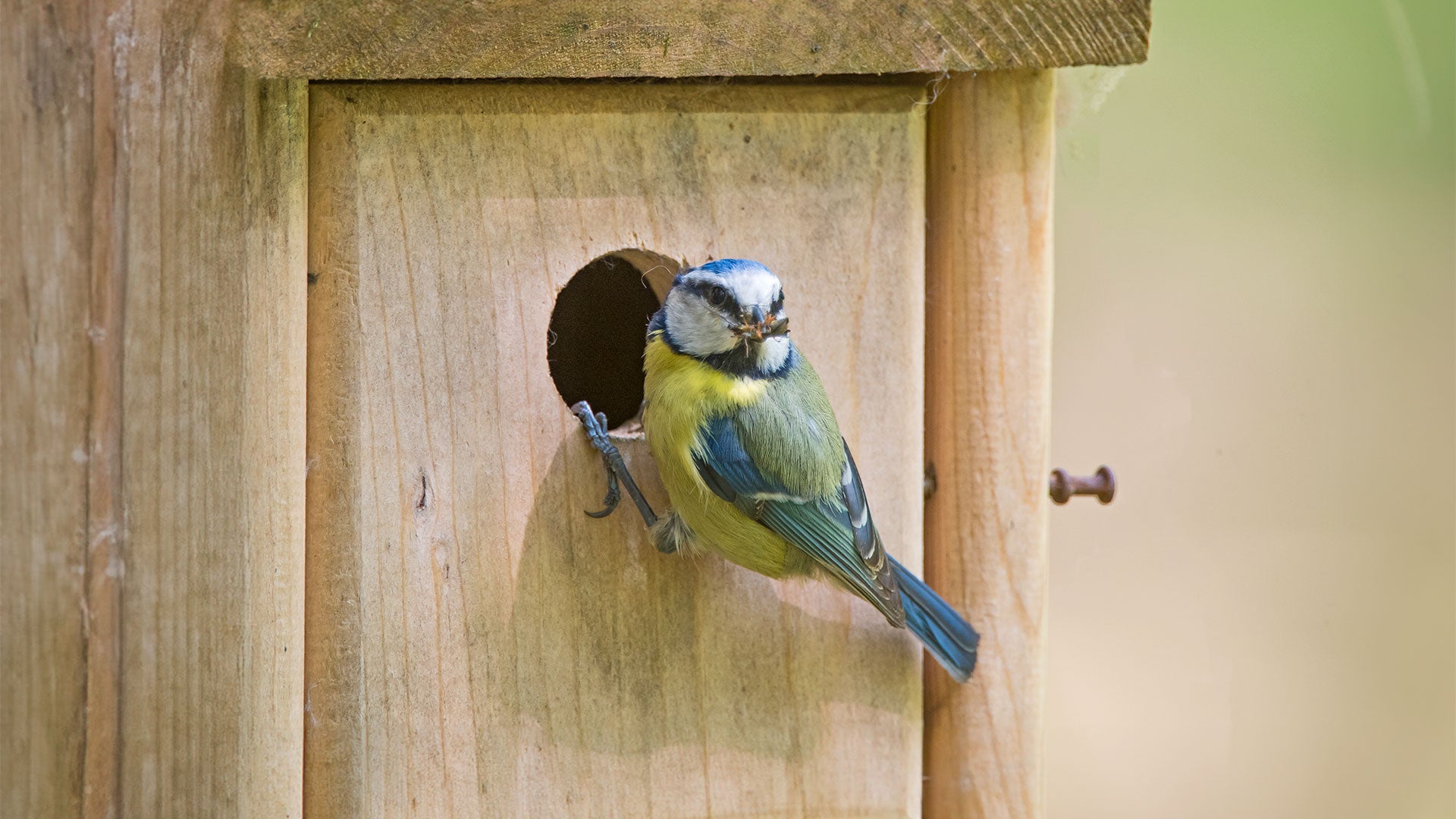Charming, curious, and ever-present in British gardens, the robin is one of our most beloved birds. Yet when it comes to feeding them, their natural habits are often misunderstood. Robins are ground feeders by nature, not acrobats like blue tits. Choosing the right feeder means understanding how robins prefer to eat and creating a safe, welcoming space for them to thrive.
Robins in Our Gardens
There’s something magical about a robin’s arrival. That flash of orange-red against a winter sky, or the cheerful song from a low branch, feels like a personal welcome back to the garden. A private connection between human and bird.
For many of us, robins are the bird that first breaks the barrier between observer and participant. They follow us as we dig, perch beside us as we pot plants, and wait expectantly for the chance of a mealworm or two. But while they may seem tame, they’re still wild at heart and the way we feed them can make a real difference to their wellbeing.
Feeding robins isn’t about taming them. It’s about meeting them halfway, respecting their natural instincts, and offering food in ways that feel familiar and safe for them, but bring them close enough for us to enjoy.
Understanding Robin Feeding Habits
Robins are ground feeders through and through. In the wild, they spend their time hopping over leaf litter, flicking aside twigs in search of beetles and worms. They rarely cling or dangle like tits or finches, their long, slender legs and wide toes, simply aren’t built for that.
So, when you see a robin awkwardly trying to balance on a tube feeder, it’s a sign of hunger, not comfort. Providing the right style of feeder helps them feed naturally and confidently, reducing stress and saving energy.

The Best Feeders for Robins
1. Ground Feeders – Closest to Nature
If robins could design their own feeder, it would look very much like a ground tray. Low, open, and easy to access, these feeders mimic the way robins forage naturally.
Choose one with:
- A mesh base to keep food dry
- A shallow lip for hopping in and out
- Optional legs or short stands to lift food just above damp soil
In cold months, try scattering a little suet-rich Hearty™ food nearby, robins are cautious at first, but their confidence grows quickly once they learn it’s safe.
Ark Tip: Place your ground feeder near low shrubs or hedges. Robins like to dart in and out for cover between mouthfuls, especially when other birds are around.

2. Hanging Tray Feeders – The Perfect Compromise
For gardens where cats or damp soil make ground feeding tricky, a hanging tray feeder is ideal. These wide, open dishes offer robins a secure perch without forcing them to cling or stretch.
Look for:
- A sturdy rim or wide edge
- Drainage holes to keep food fresh
- A slightly sheltered spot, such as under a tree or eave
- Easy clean surfaces avoiding flat wooden trays or inaccessible corners
Hanging trays are also brilliant for mixed feeding, a few mealworms, some soft suet pellets, and soaked raisins can tempt robins and blackbirds alike.
Ark Tip: In winter, hang your tray close to a dense hedge or ivy. It gives robins a quick bolt-hole if a sparrowhawk sweeps through, and they’ll feel safer returning to feed.

3. Window Feeders – For Close Encounters
Once a robin learns to trust you, few garden moments are more magical than having one feed from a window tray just a few feet away. Their boldness and curiosity make them ideal candidates for window feeders, especially when food supplies run low.
Start by placing a few mealworms on the sill and stepping back. Over time, your robin will hop closer and may even learn to wait for you each morning.
Best foods for window feeders:
Ark Tip: Keep window feeders spotless. Robins are territorial but sensitive to hygiene, and clean feeders help prevent disease spread among local birds.

Where to Place Your Robin Feeder
Robins like quiet corners where they can feed in peace. A shaded area near dense cover works best. They’ll often perch on a nearby branch, scan for danger, and then dart in for a bite.
Tips for success:
- Keep feeders low and sheltered
- Offer fresh water nearby
- Keep feeding consistent - robins are creatures of routine
- Clean regularly to prevent mould and bacteria
You may even find your robin greeting you daily, waiting expectantly for breakfast before singing from its favourite post, a small ritual of mutual trust and joyfulness.
FAQs For the Best Bird Feeders for Robins
Why do robins sometimes use tube feeders?
Out of necessity. When natural food runs low, robins will adapt, but it’s not comfortable for them. A tray or ground feeder is always the kinder option.
What’s the best food for robins in winter?
High-fat, soft foods like suet, mealworms, and softbill mixes. These give them vital energy for long, cold nights.

Can robins feed alongside other birds?
Yes, but they’re easily intimidated. Offer a separate tray away from busier feeders so your robin doesn’t have to compete.
How can I attract robins to feed regularly?
Routine is key. Feed at the same time each day and keep their feeder clean and topped up, they’ll soon learn your schedule.
Are robins territorial around feeders?
Very. Males often defend feeding spots, especially in winter. Having multiple feeding areas reduces squabbles and stress.
Is it okay to feed robins all year round?
Yes. Just adjust the food to the season high-protein, calcium fortified foods during the breeding season and high energy-rich suet in winter.
Final Thoughts
Feeding robins is more than a simple act of kindness, it’s a bridge between our lives and the quiet rhythms of nature.
Robins are with us all year round, spring, summer, autumn, and winter, their presence is constant. In summer, they watch from the flowerbeds as we garden, bold and curious companions to our quiet moments outdoors. By winter, those brief encounters can grow into something more, a small, trusting relationship built on familiarity, routine, and care.
Each time you fill a feeder or scatter a few mealworms, you’re offering more than food. You’re giving a robin the safety, warmth, and energy to survive and, perhaps, returning a little of the wonder and joy it brings to your garden.
For over 30 years, Ark Wildlife has helped people bring wildlife closer, not just as visitors, but as part of a living, breathing garden community.
